 W
WThe Isle of Man had become separated from Great Britain and Ireland by 6500 BC. It appears that colonisation took place by sea sometime during the Mesolithic era. The island has been visited by various raiders and trading peoples over the years. After being settled by people from Ireland in the first millennium, the Isle of Man was converted to Christianity and then suffered raids by Vikings from Norway. After becoming subject to Norwegian suzerainty as part of the Kingdom of Mann and the Isles, the Isle of Man later became a possession of the Scottish and then the English crowns. In 1603 during the union of the crowns of England and Scotland through James VI and I
 W
WChapel Hill, Balladoole is a significant historical and archaeological site in Arbory on the Isle of Man. The site is a short distance from Castletown in the south of the Island. It is located on a small hilltop overlooking the coast. Balladoole has undergone extensive archaeological excavations in the 20th century, most notably in 1944-1945 by German archaeologist Gerhard Bersu who was interned on the Isle of Man during World War II.
 W
WThe Ballaqueeney Ogham Stone is an early medieval memorial stone with an Ogham inscription. It was discovered at Ballaqueeney (Ballaquine) Isle of Man in 1874 by Reverend F. B. Grant during the process of excavating dirt for use as railroad ballast.
 W
WIn 1819 Thomas Kewish, a blacksmith, and James Taubman, a local brewer, discovered the nearly perfect skeleton of an extinct “elk” in a marl pit at Ballaugh, Isle of Man. Kewish reassembled the bones and put the specimen on display.
 W
WThe Braaid is an Iron Age roundhouse and two Norse long houses on this site represent its occupation until the 11th or 12th century AD in the parish of Marown in the Isle of Man.
 W
WThe Chronicles of the Kings of Mann and the Isles or Manx Chronicle is a medieval Latin manuscript relating the early history of the Isle of Man.
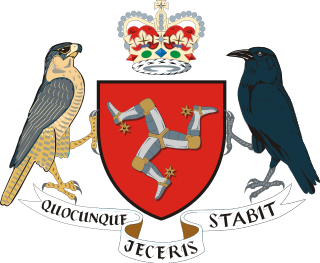 W
WCrown Commissioner was a proposed new title to replace the title of Lieutenant Governor of the Isle of Man.
 W
WThe Diocese of the Isles, also known as the Diocese of Suðreyar, or the Diocese of Sodor, was one of the dioceses of medieval Norway. After the mid-13th-century Treaty of Perth, the diocese was accounted as one of the 13 dioceses of Scotland. The original seat of the bishopric appears to have been at Peel, on St Patrick's Isle, where indeed it continued to be under English overlordship; the Bishopric of the Isles as it was after the split was relocated to the north, firstly to Snizort and then Iona.
 W
WThe Executive Council is the former title of the Council of Ministers, the principal executive body of the Isle of Man Government. Its chairman was the Lieutenant Governor until 1980, when he was replaced by a Chairman elected by Tynwald. The Chairman was renamed Chief Minister in 1986, and the Council was renamed Council of Ministers in 1990.
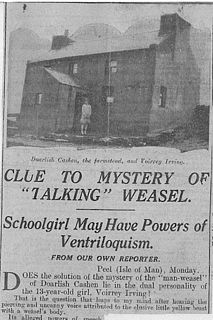 W
WGef, also referred to as the Talking Mongoose or the Dalby Spook, was the name given to an allegedly talking mongoose which was claimed to inhabit a farmhouse owned by the Irving family. The Irvings' farm was located at Cashen's Gap near the hamlet of Dalby on the Isle of Man. The story was given extensive coverage by the tabloid press in Britain in the early 1930s. The Irvings' claims gained the attention of parapsychologists and ghost hunters, such as Harry Price, Hereward Carrington, and Nandor Fodor. Some investigators of the era as well as contemporary critics have concluded that Voirrey Irving used ventriloquism and family collusion to perpetuate the hoax.
 W
WThe title of Governor of the Isle of Man existed until 1828. Other titles were also used, especially before 1595.Holan (1219–?), titled Seneschal List incomplete Fogall McHascatt (1260–?), titled Seneschal Godfrey MacManus (1266–?), titled Bailiff Alan of Galloway, titled Bailiff Maurice Okerfair, titled Bailiff Reginald the Chaplain, titled Bailiff Brennus, titled Bailiff Donald, titled Bailiff Walter de Huntercombe (1290–93), titled Custodian List incomplete
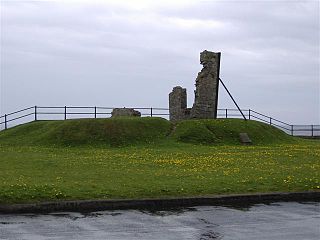 W
WHango Hill is an historic mound on the coast road between Castletown and Derbyhaven, Malew parish, Isle of Man.
 W
WThe history of the Jews in the Isle of Man goes back to at least the early 19th century.
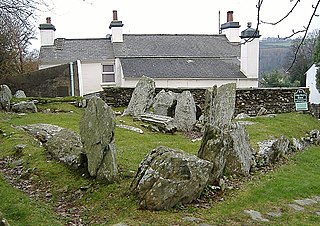 W
WKing Orry's Grave is the largest megalithic tomb on the Isle of Man. It is situated in Minorca, in the northern part of the village of Laxey, partly in a private cottage garden. It is some 4000 to 5000 years old; however the reference to King Orry is to the 11th century local ruler Godred Crovan, who has a number of supposed burial places.
 W
WThe Nunnery is an estate outside of Douglas on the Isle of Man, named after a religious foundation on the site, at grid reference SC372754.
 W
WPeggy is an armed yacht built in 1789 for George Quayle MHK (1751–1835), a prominent politician and banker on the Isle of Man. She is the oldest surviving Manx craft and is one of only a very few surviving vessels built in the 18th century.
 W
WThe Treaty of Perth, signed 2 July 1266, ended military conflict between Magnus VI of Norway and Alexander III of Scotland over possession of the Hebrides and the Isle of Man.
 W
WIsle of Man Airport, is the main civilian airport on the Isle of Man. It is located in the south of the island at Ronaldsway near Castletown, 6 nautical miles southwest of Douglas, the island's capital. Along with the Isle of Man Sea Terminal, it is one of the two main gateways to the island. The airport has scheduled services to the United Kingdom and the Republic of Ireland.
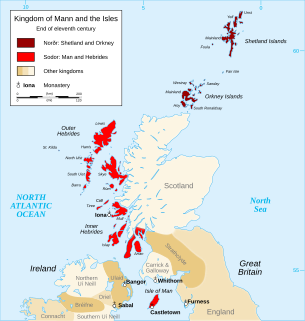 W
WThe Manx runestones were made by the Norse population on the Isle of Man during the Viking Age, mostly in the 10th century. Despite its small size, the Isle of Man stands out with many Viking Age runestones, in 1983 numbering as many as 26 surviving stones, which can be compared to 33 in all of Norway. So many of them may appear on the Isle of Man because of the merging of the immigrant Norse runestone tradition with the local Celtic tradition of raising high crosses.
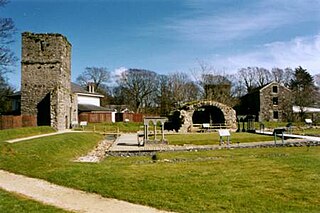 W
WWilliam Russell was a fourteenth-century Cistercian prelate. He appears to have begun his career as a Cistercian monk at Rushen Abbey on the Isle of Man (Mann), ascending to the rank of abbot there, before being elected Bishop of Mann and the Isles (Sodor). After traveling to Continental Europe for confirmation and consecration, avoiding a trip to the metropolitan in Norway, he returned to the Irish Sea as a legal bishop. A few things are known of his episcopate, particularly his activities in England and a series of provincial statutes apparently promulgated under his leadership.
 W
WSt Adamnan's Church is the former parish church of Lonan in the Isle of Man. The church is situated in an isolated position, surrounded by open farmland on the eastern coast of the island, between Groudle Glen and Baldrine. The eastern part of the church has been restored, but it is otherwise in a ruinous, though well-tended, condition. St Adamnan was the Abbot of Iona between 679 and 704.
 W
WThe Story of the Isle of Man is a 1901 book on the history of the Isle of Man by A.W. Moore. It was written as an introduction to Manx history, specifically for children.
 W
WManx surnames are surnames which originate on the Isle of Man. These reflect the recorded history of the island which can be divided into three different eras — Gaelic, Norse, and English. In consequence most Manx surnames are derived from the Gaelic, Norse or English languages.